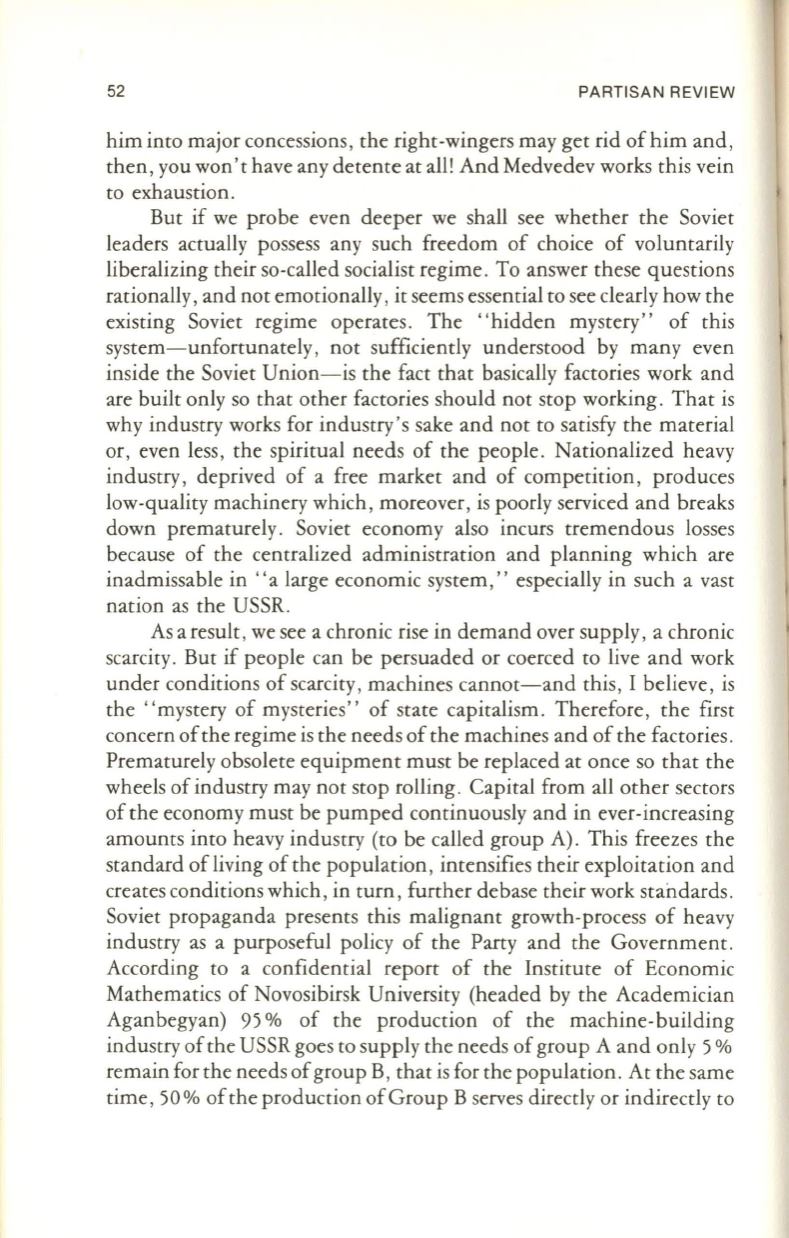
52
PARTISAN REVIEW
him into major concessions , the right-wingers may get rid of him and,
then, you won't have any detente at all! And Medvedev works this vein
to exhaustion .
But if we probe even deeper we shall see whether the Soviet
leaders actually possess any such freedom of choice of voluntarily
liberalizing their so-called socialist regime. To answer these questions
rationally, and not emotionally, it seems essential to see clearly how the
existing Soviet regime operates. The "hidden mystery" of this
system-unfortunately, not sufficiently understood by many even
inside the Soviet Union-is the fact that basically factories work and
are built only so that other factories should not stop working. That is
why industry works for industry's sake and not to satisfy the material
or, even less , the spiritual needs of the people . Nationalized heavy
industry, deprived of a free market and of competition , produces
low-quality machinery which, moreover, is poorly serviced and breaks
down prematutely . Soviet economy also incurs tremendous losses
because of the centralized administration and planning which are
inadmissable in "a large economic system," especially in such a vast
nation as the USSR.
As a result, we see a chronic rise in demand over supply , a chronic
scarcity. But if people can be persuaded or coerced to live and work
under conditions of scarcity , machines cannot-and this , I believe , is
the "mystery of mysteries" of state capitalism . Therefore, the first
concern of the regime is the needs of the machines and of the factories.
Prematurely obsolete equipment must be replaced at once so that the
wheels of industry may not stop rolling . Capital from all other sectors
of the economy must be pumped continuously and in ever-increasing
amounts into heavy industry (to be called group A) . This freezes the
standard of living of the population, intensifies their exploitation and
creates conditions which , in turn, further debase their work standards.
Soviet propaganda presents this malignant growth-process of heavy
industry as a purposeful policy of the Party and the Government .
According to a confidential report of the Institute of Economic
Mathematics of Novosibirsk University (headed by the Academician
Aganbegyan) 95
%
of the production of the machine-building
industry of the USSR goes to supply the needs of group A and only 5
%
remain for the needs of group B, that is for the population . At the same
time , 50% of the production of Group B serves directly or indirectly to


